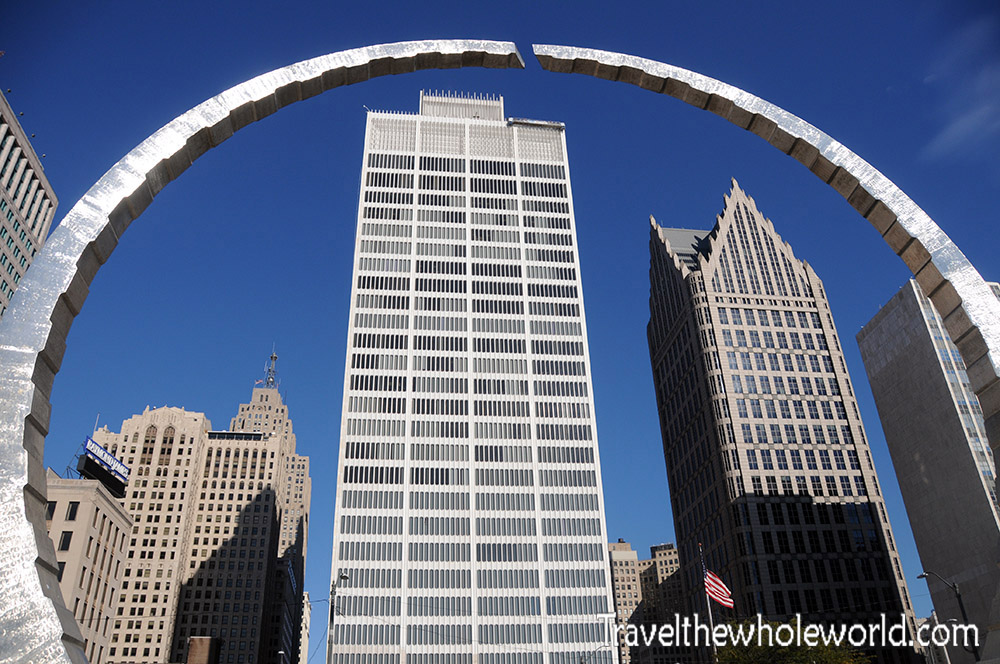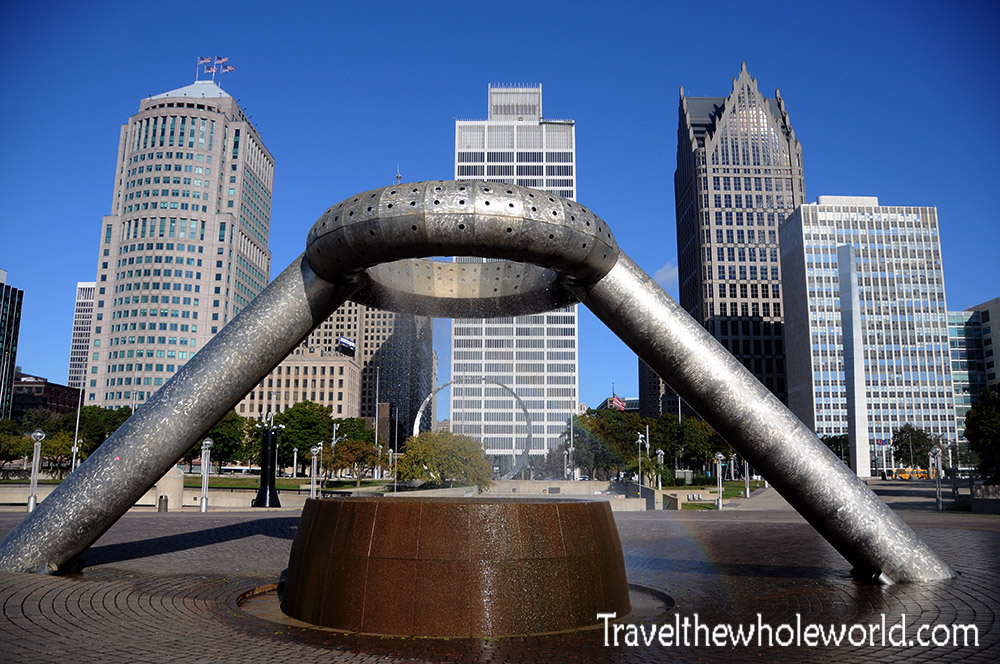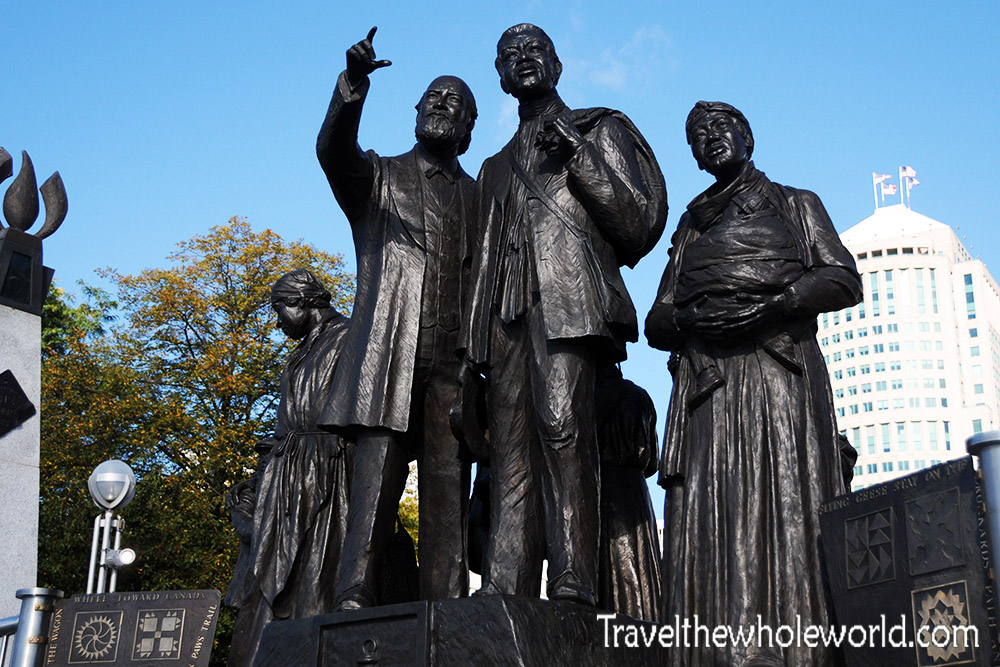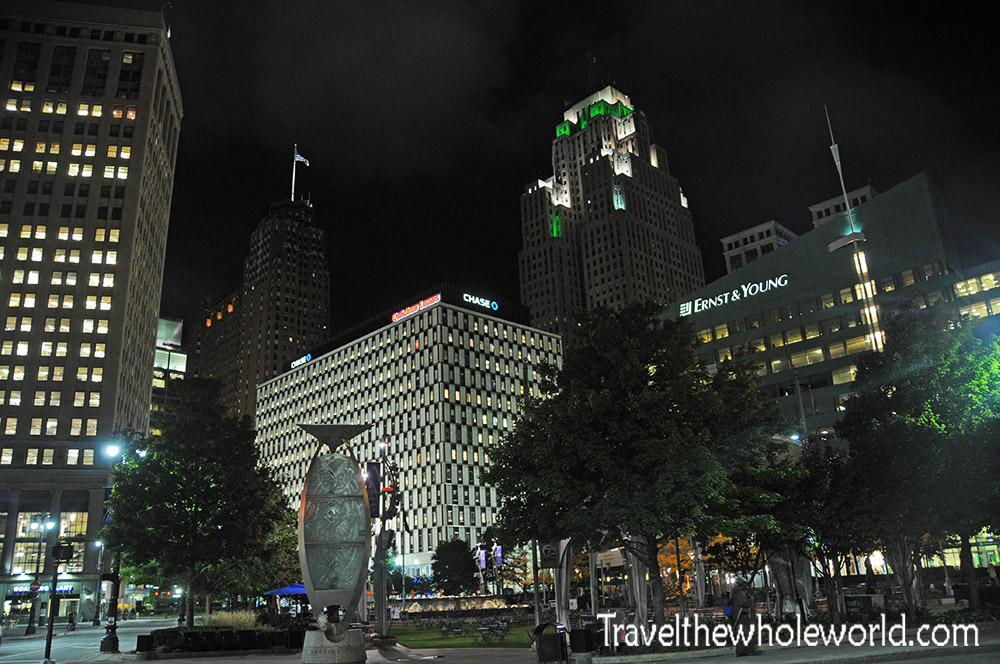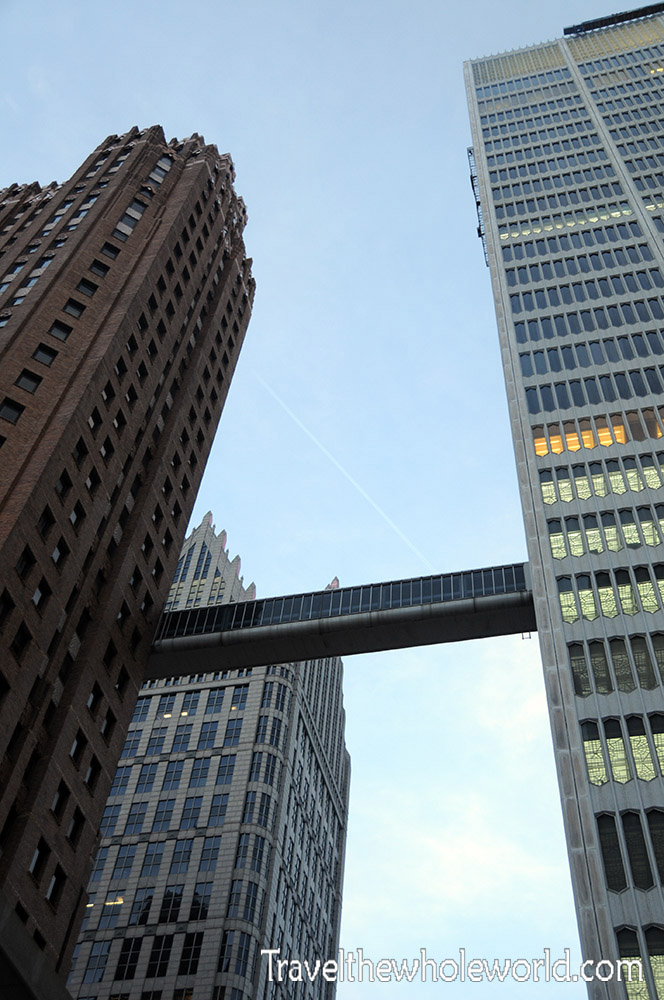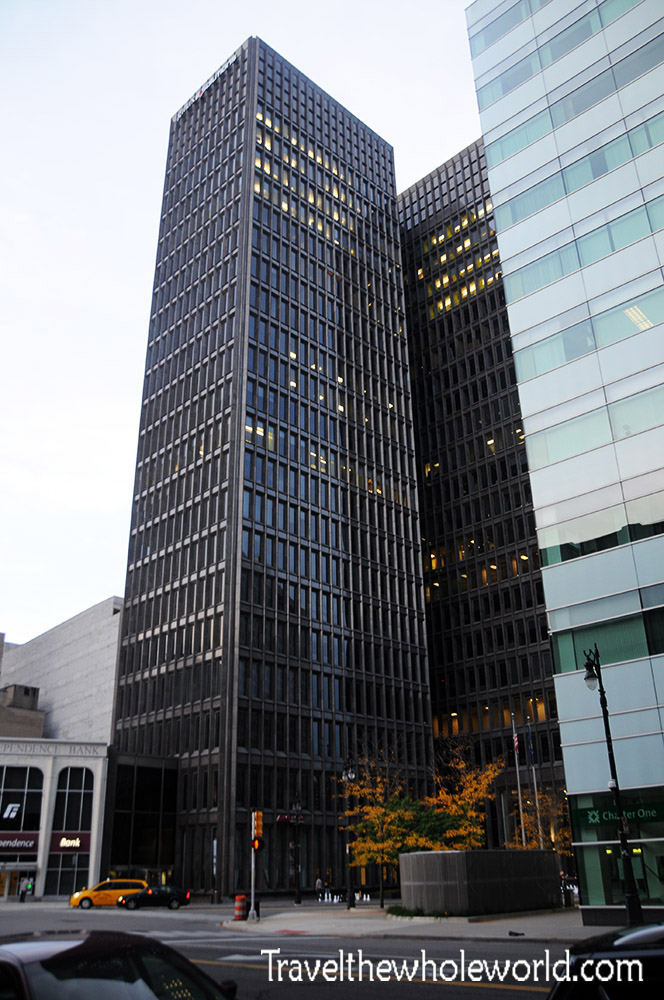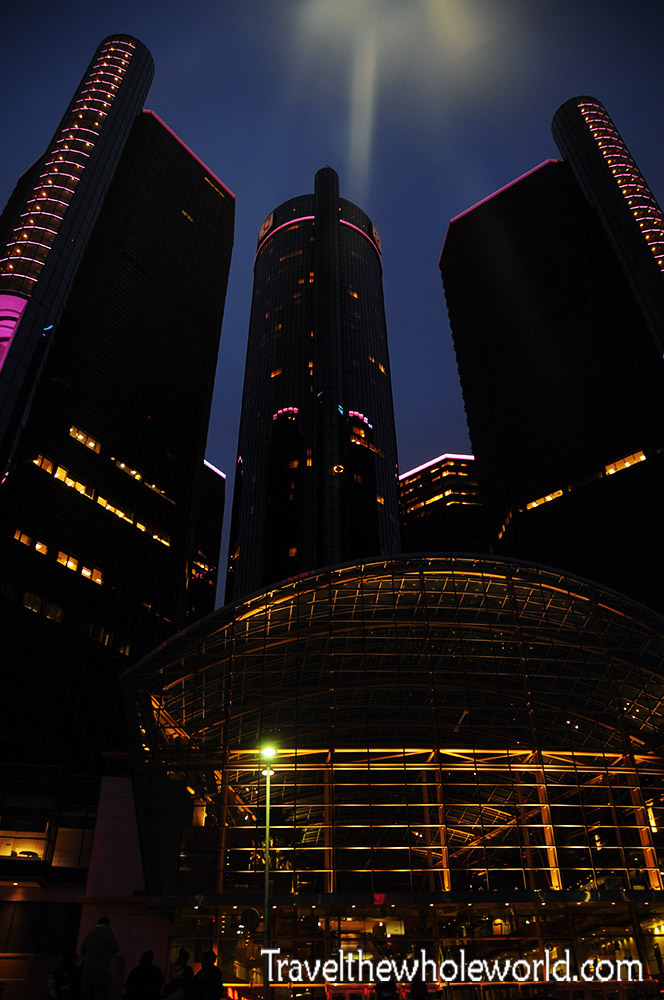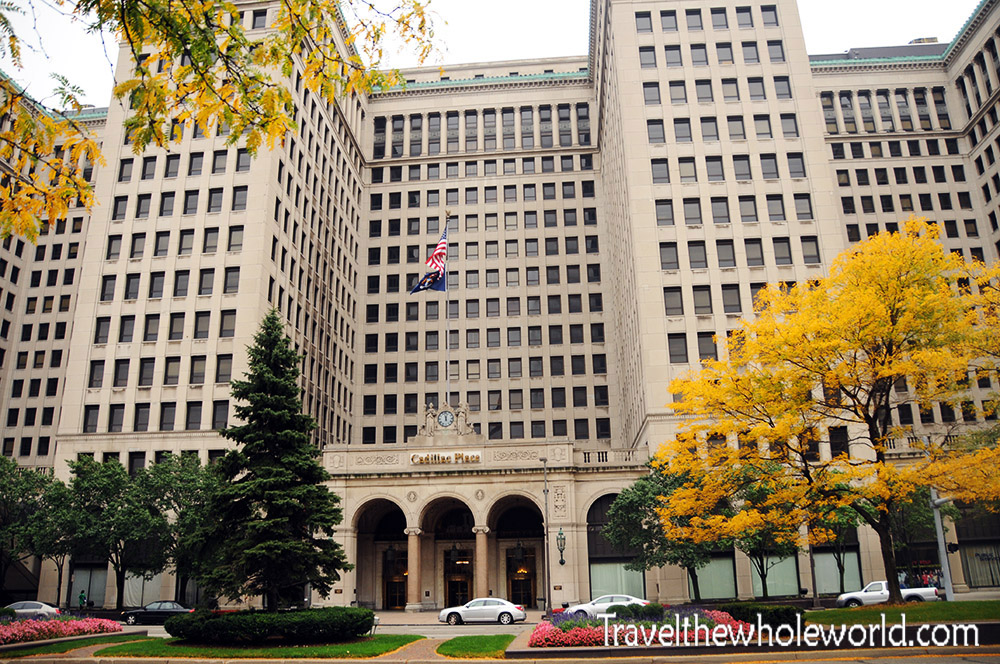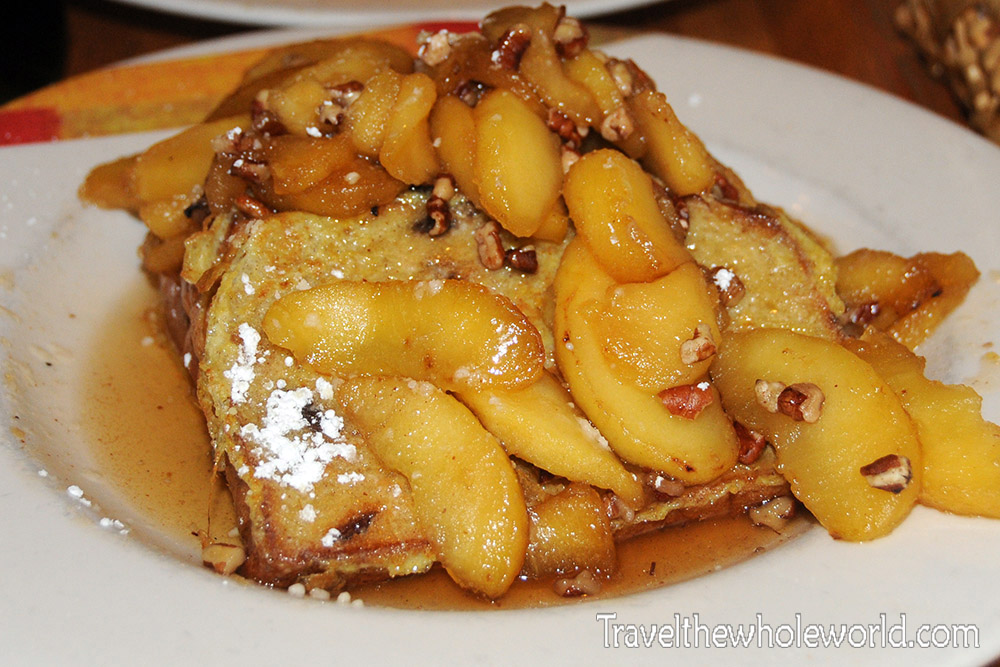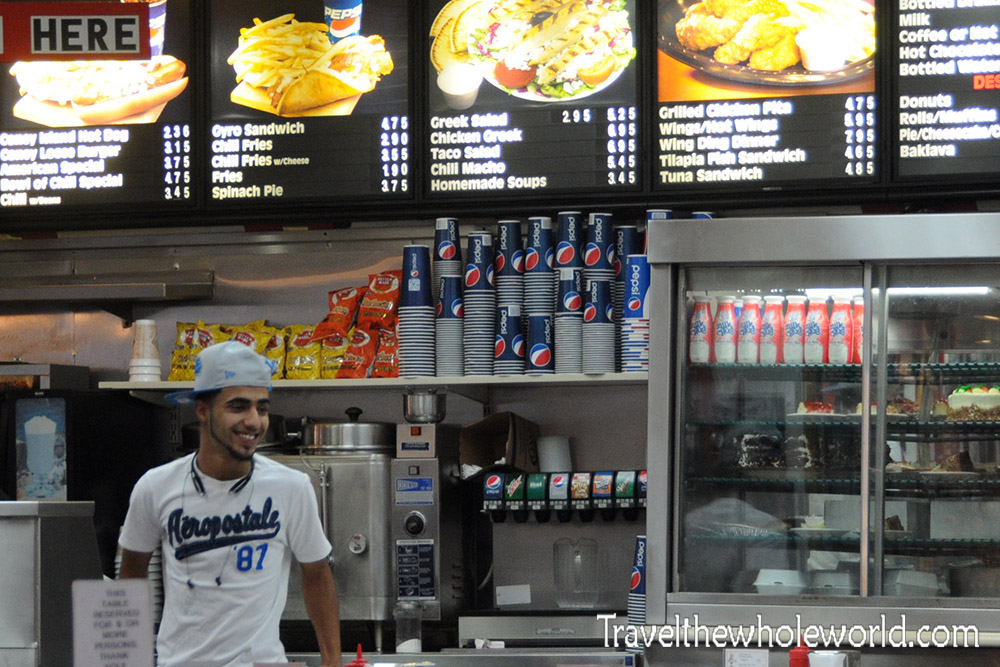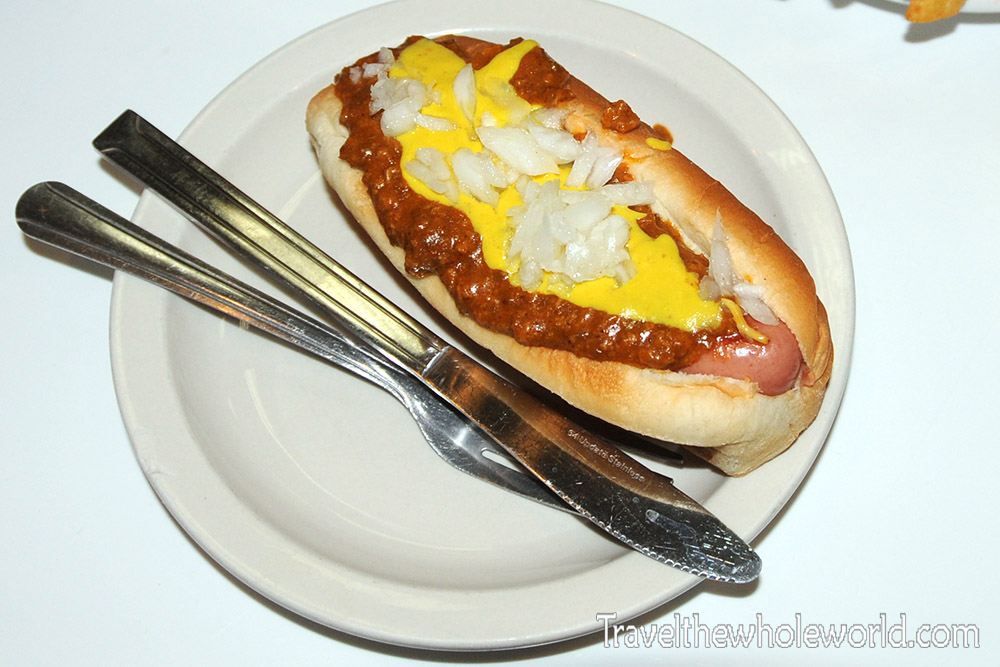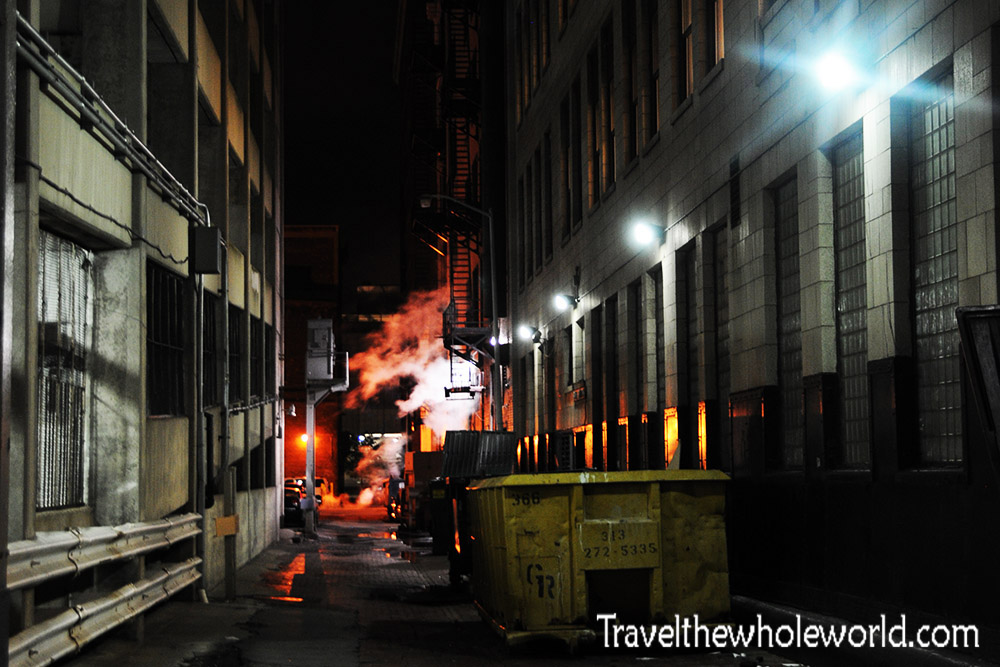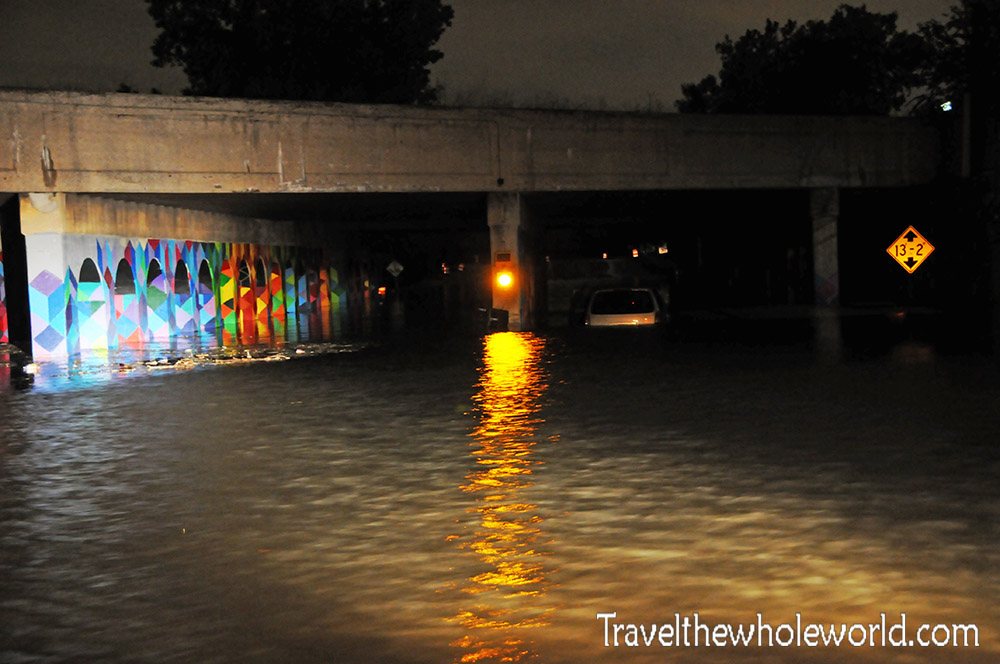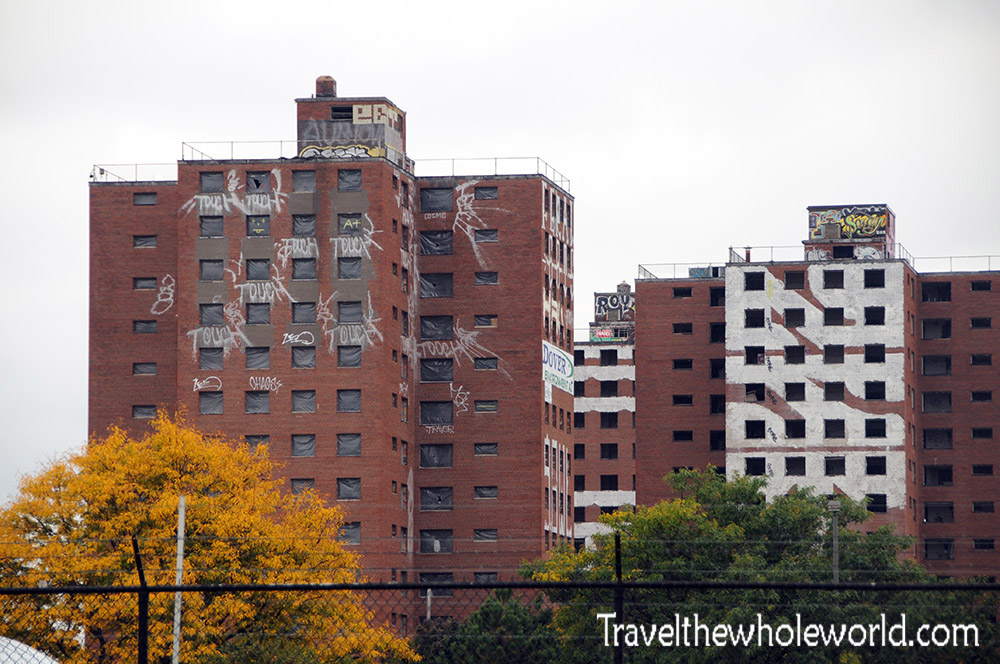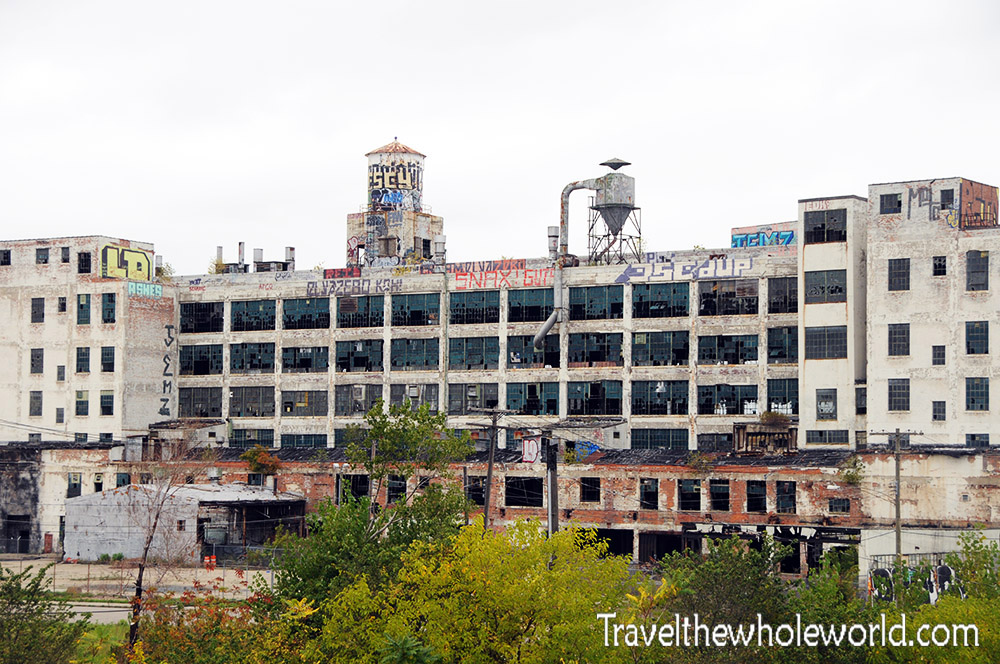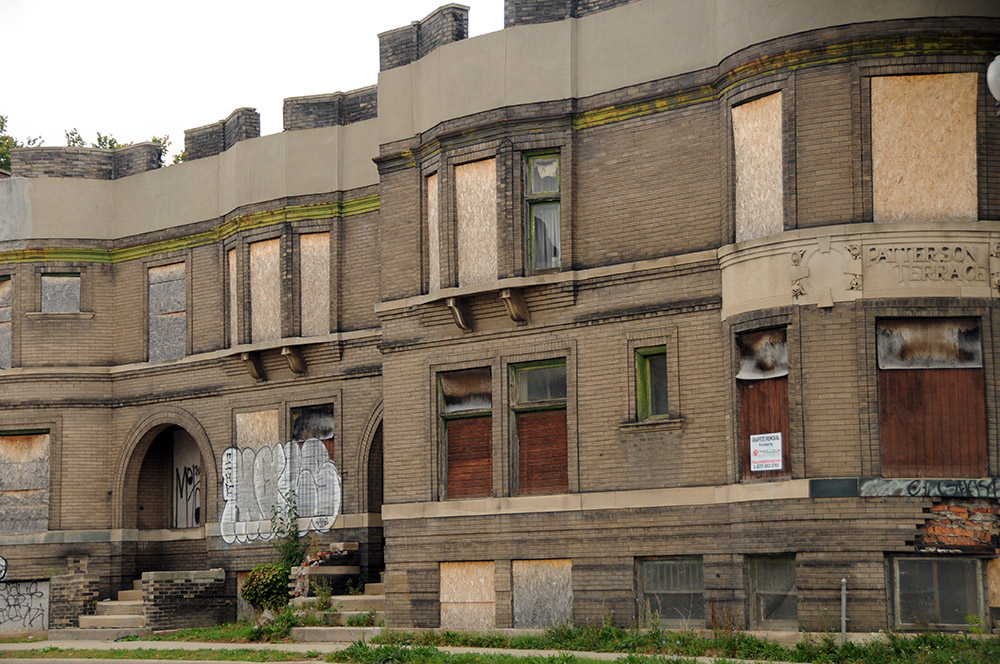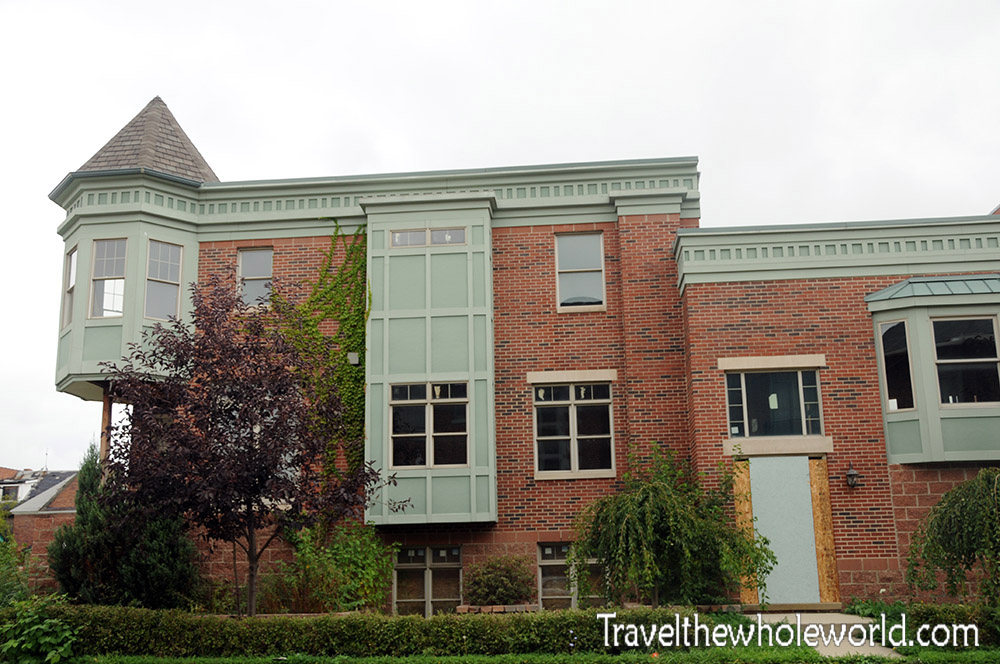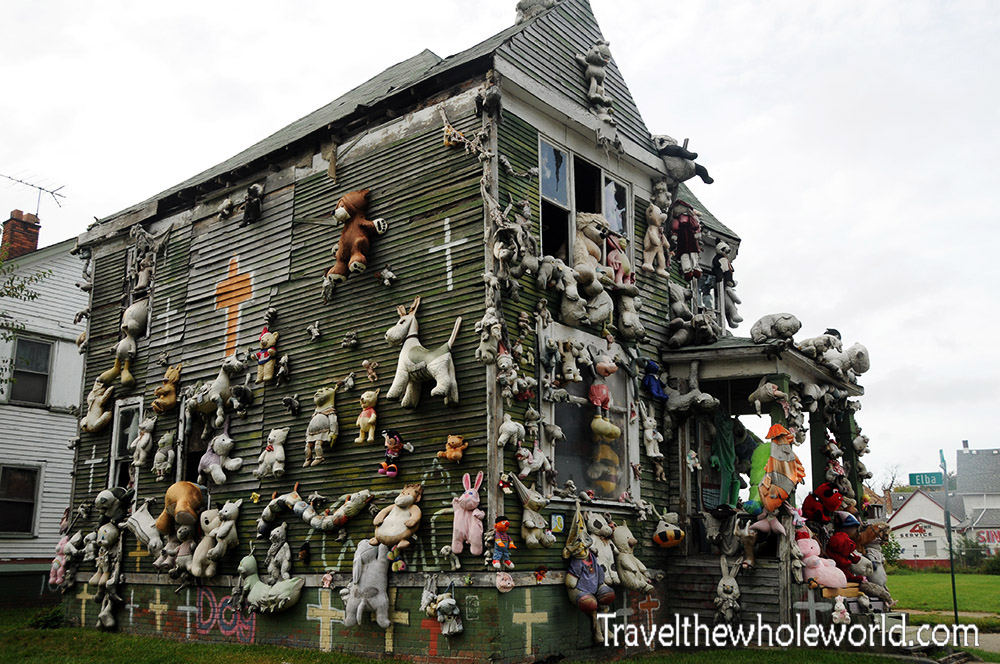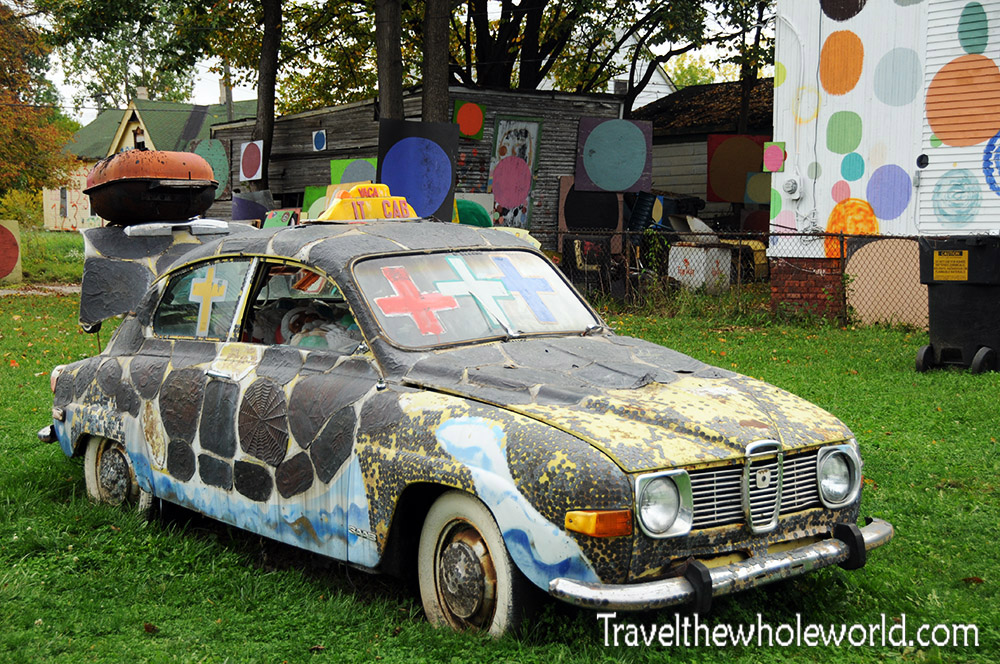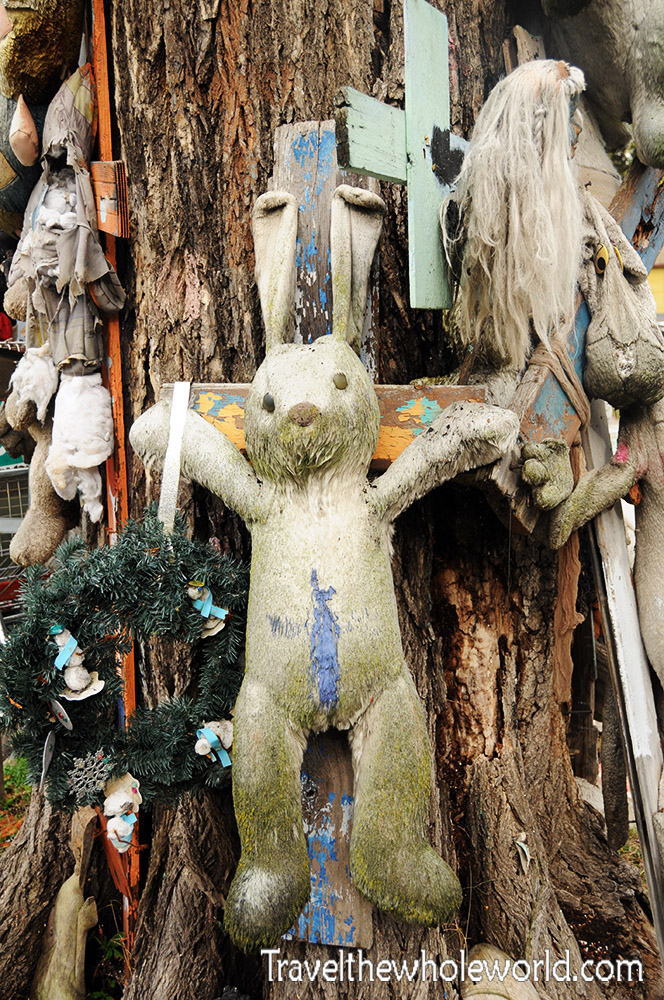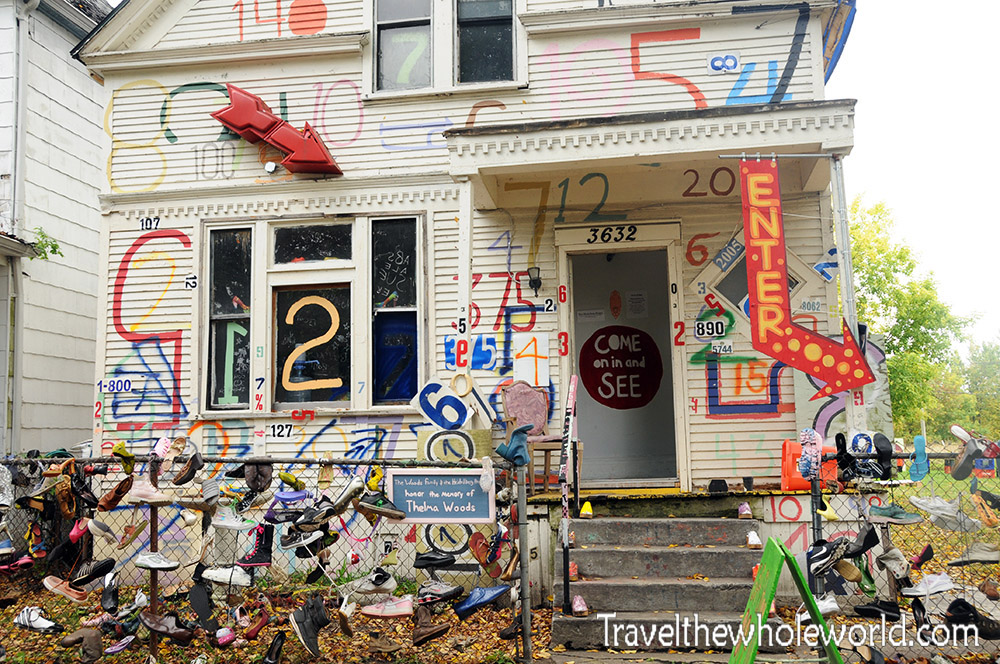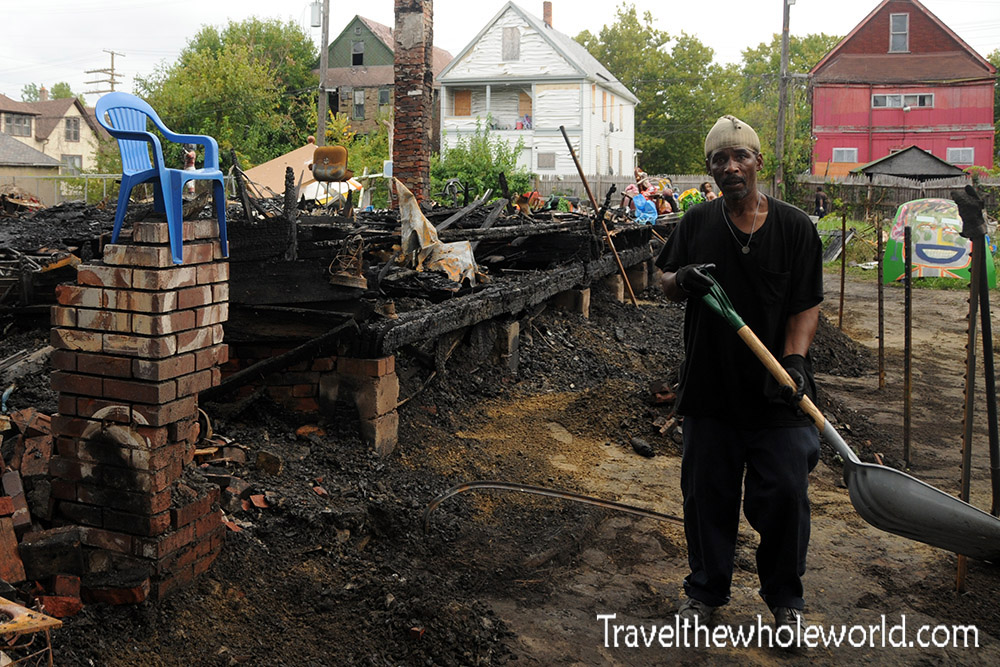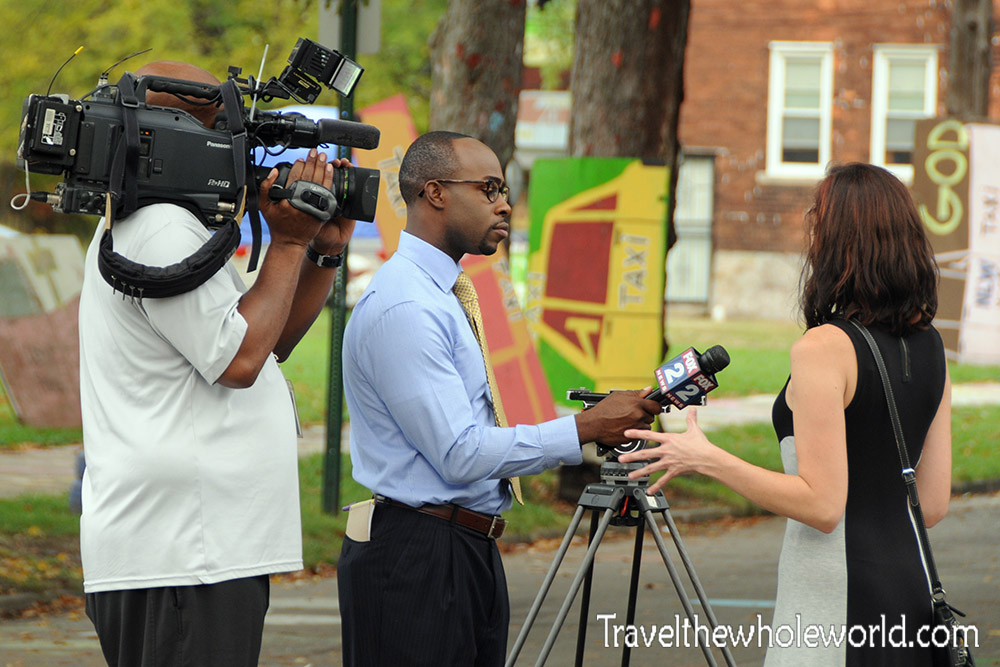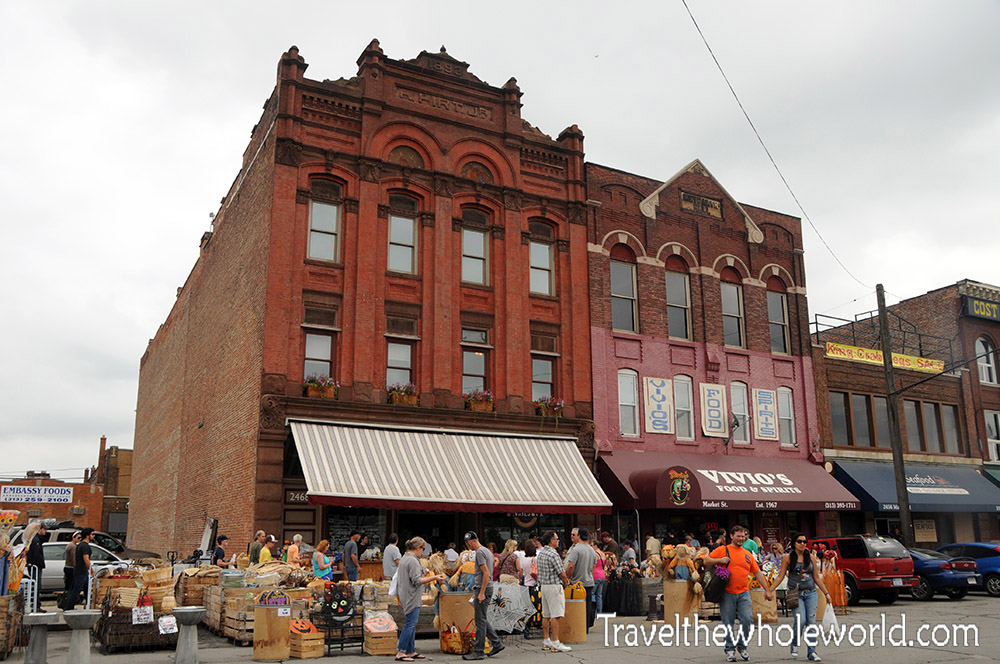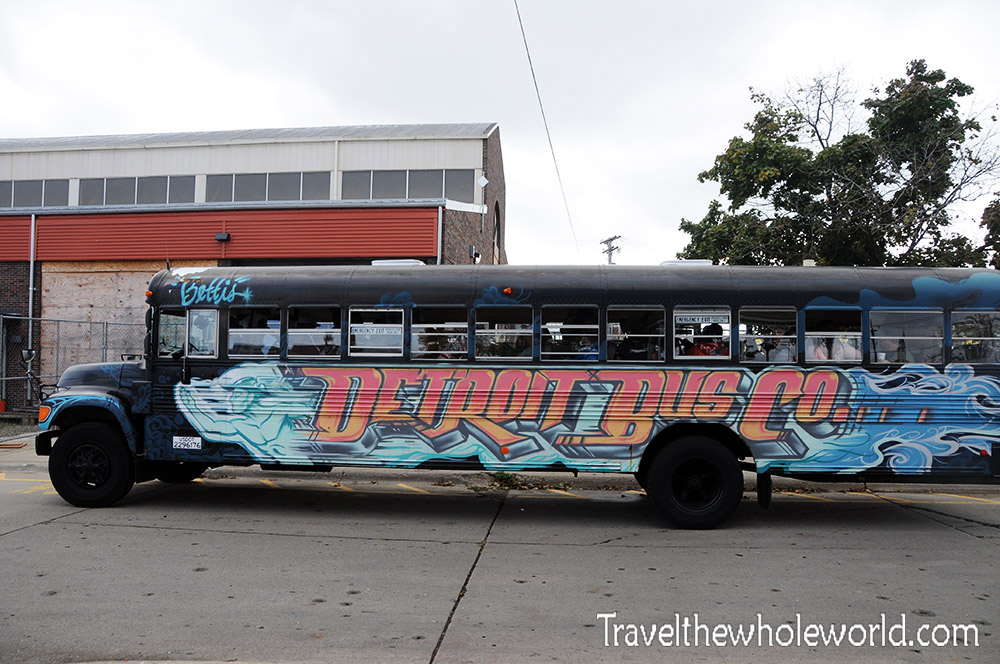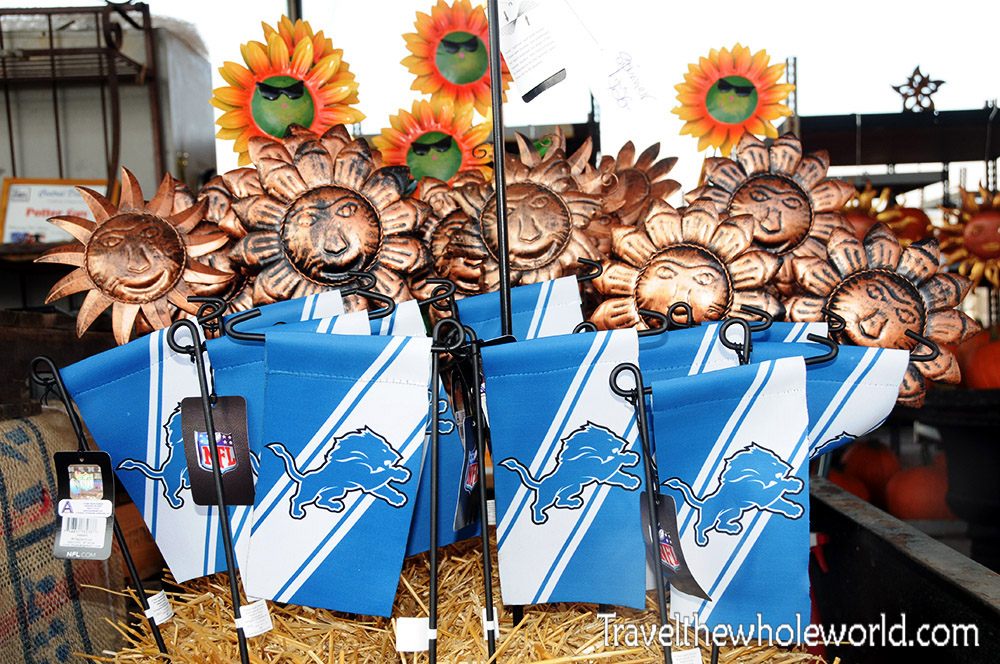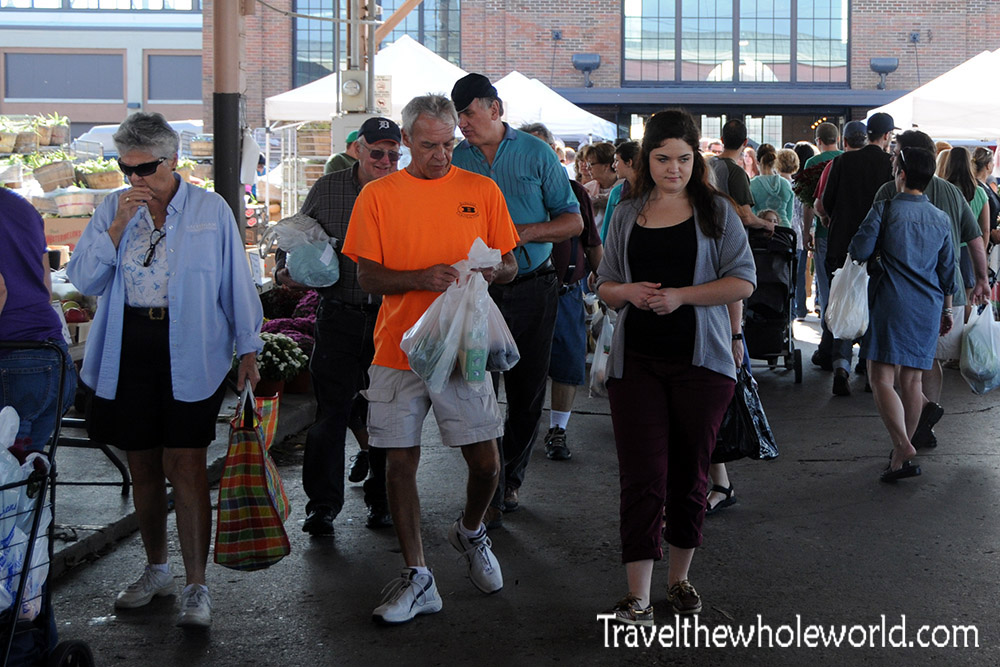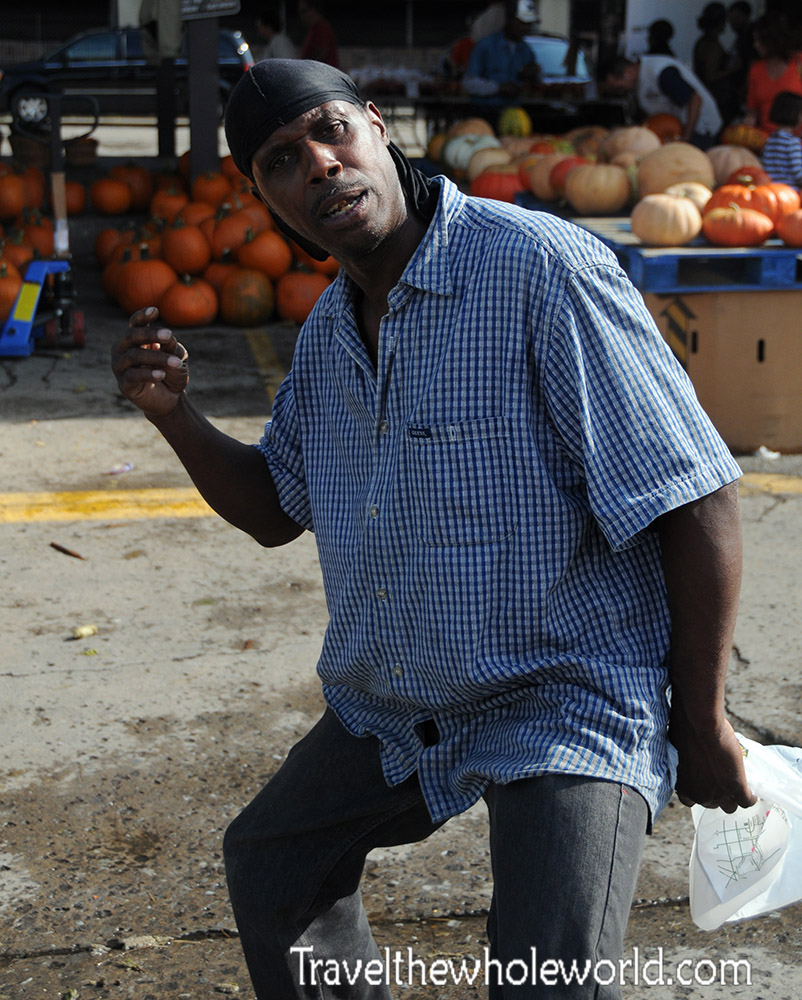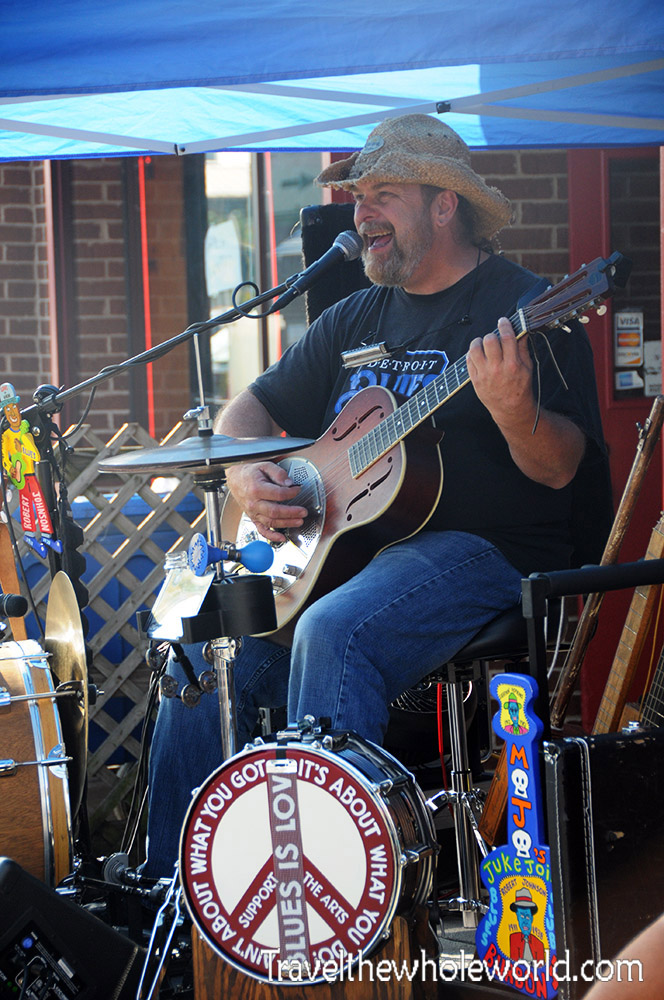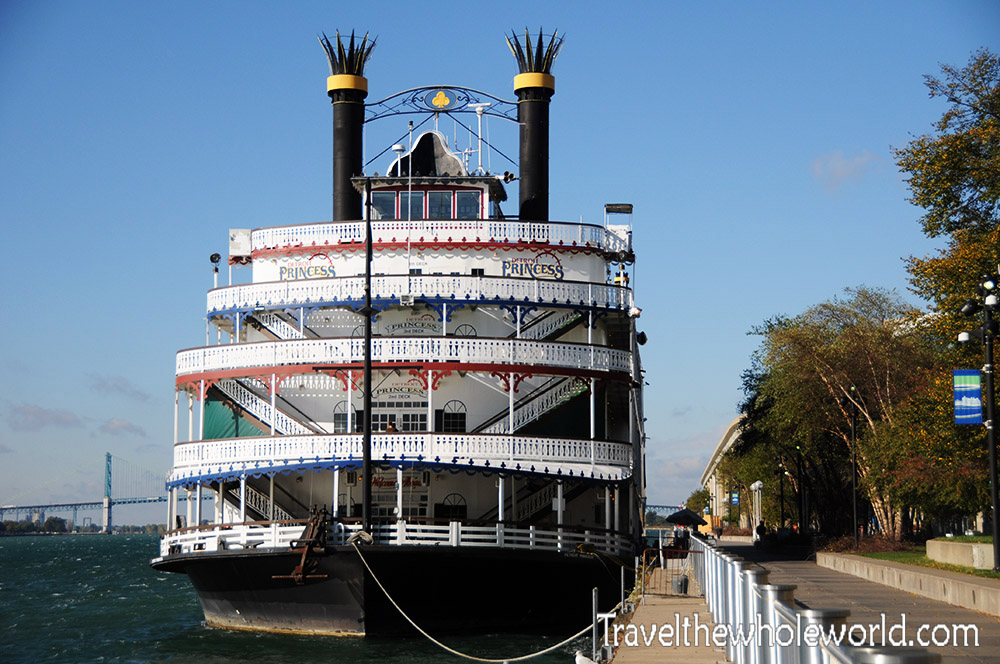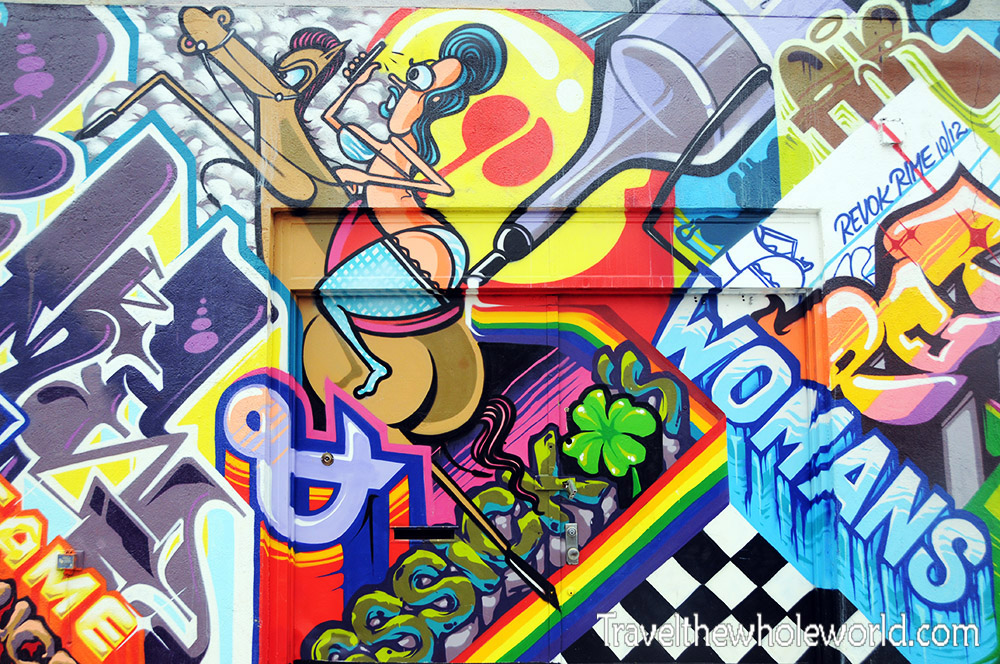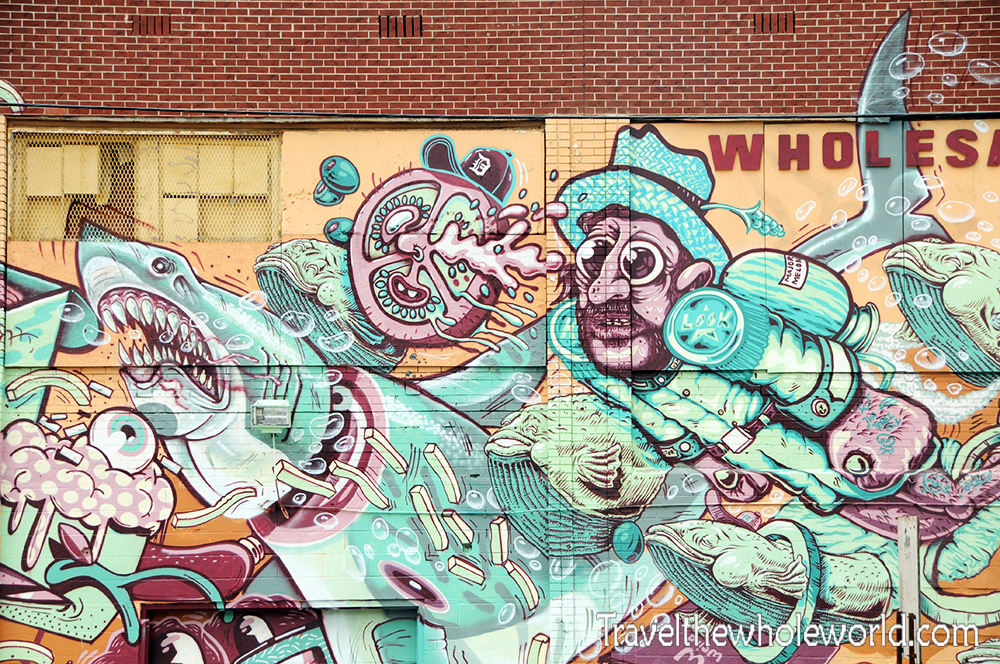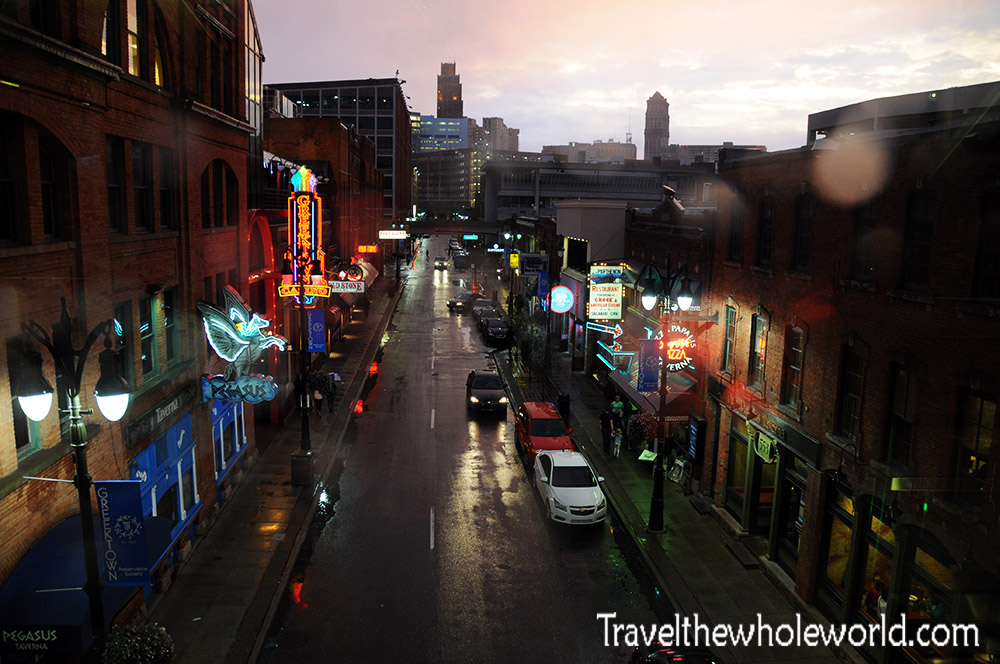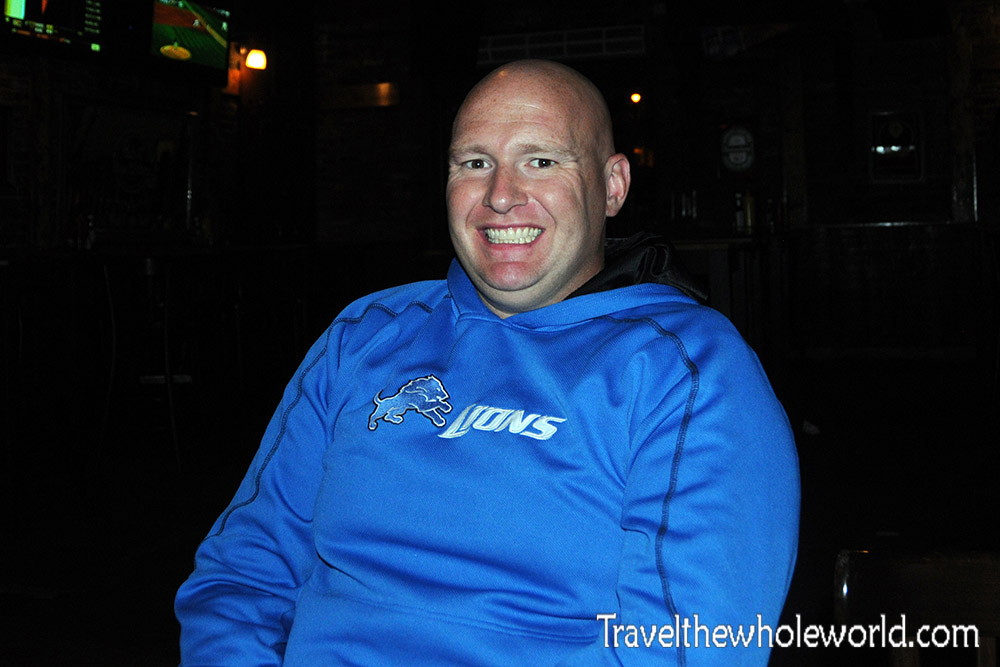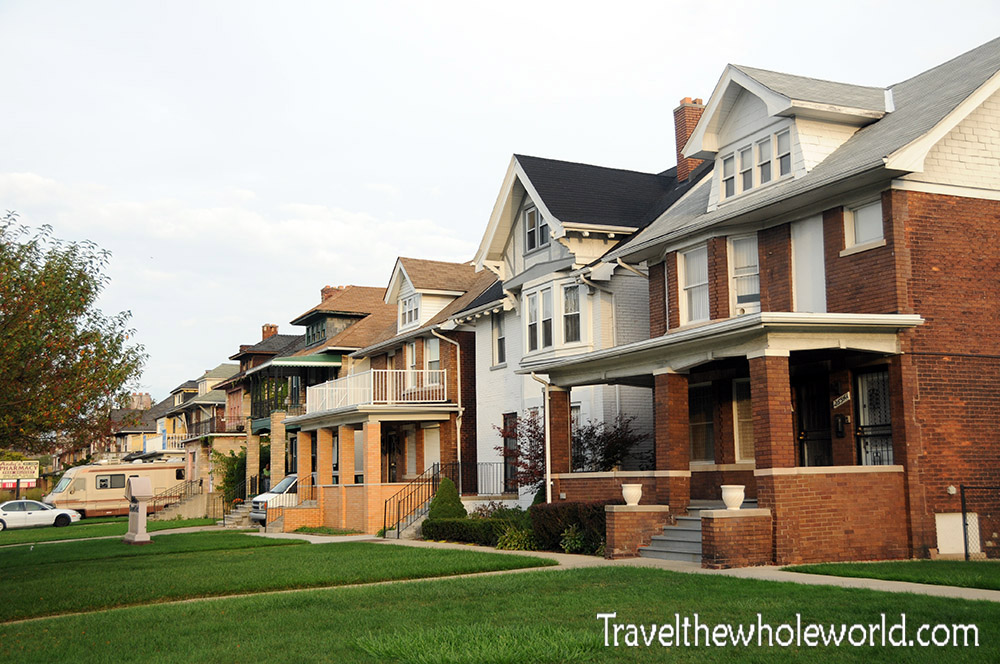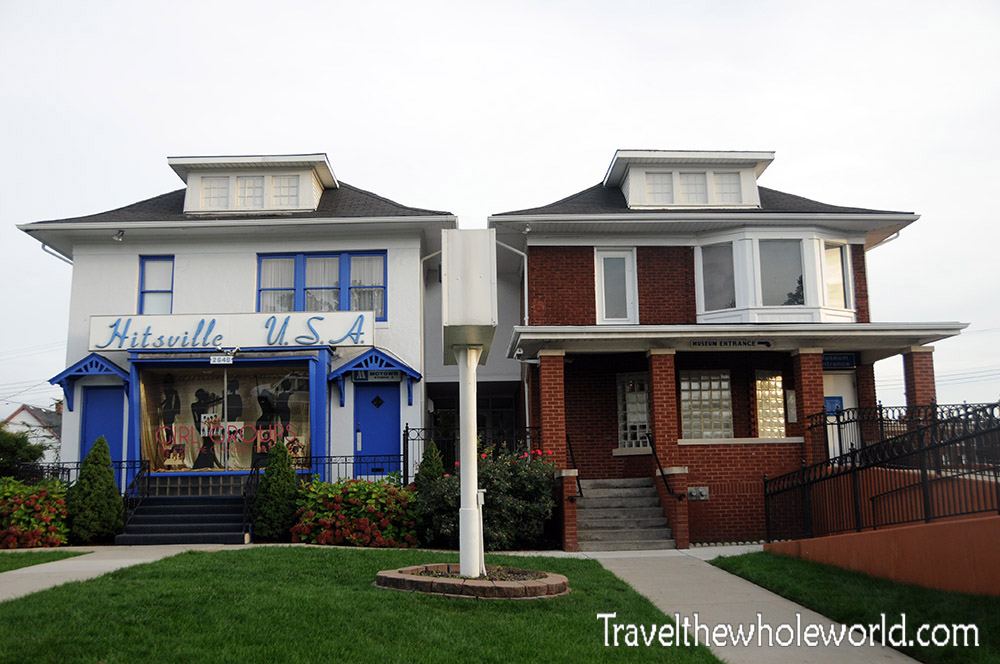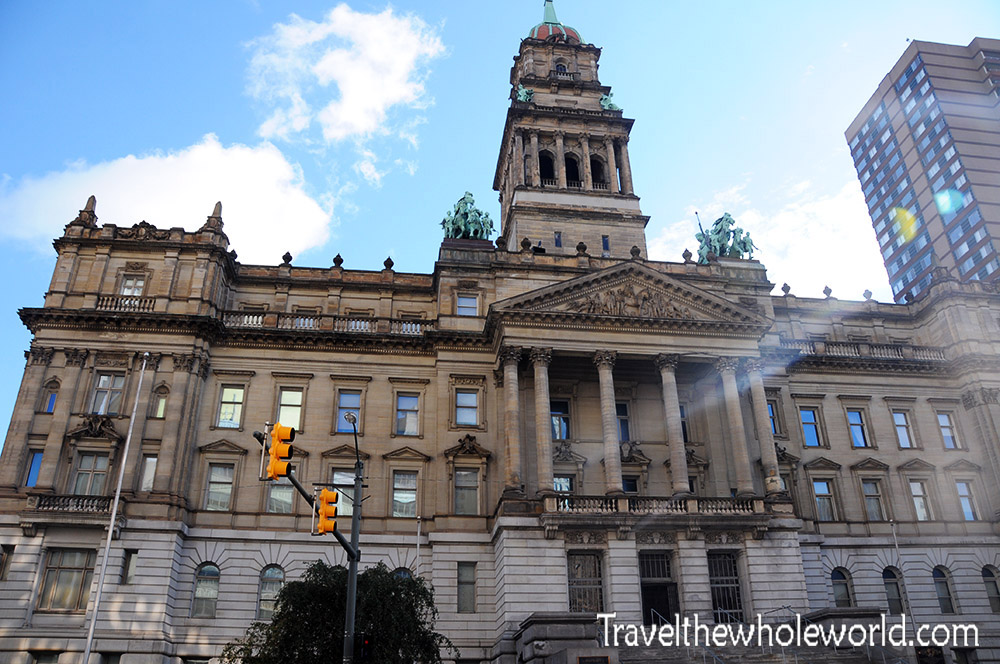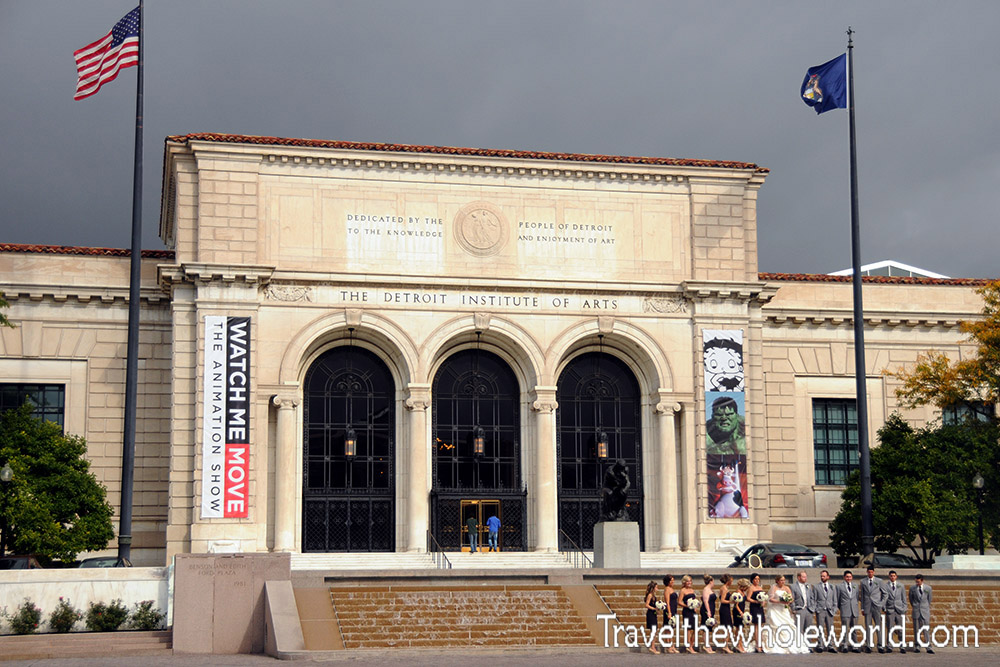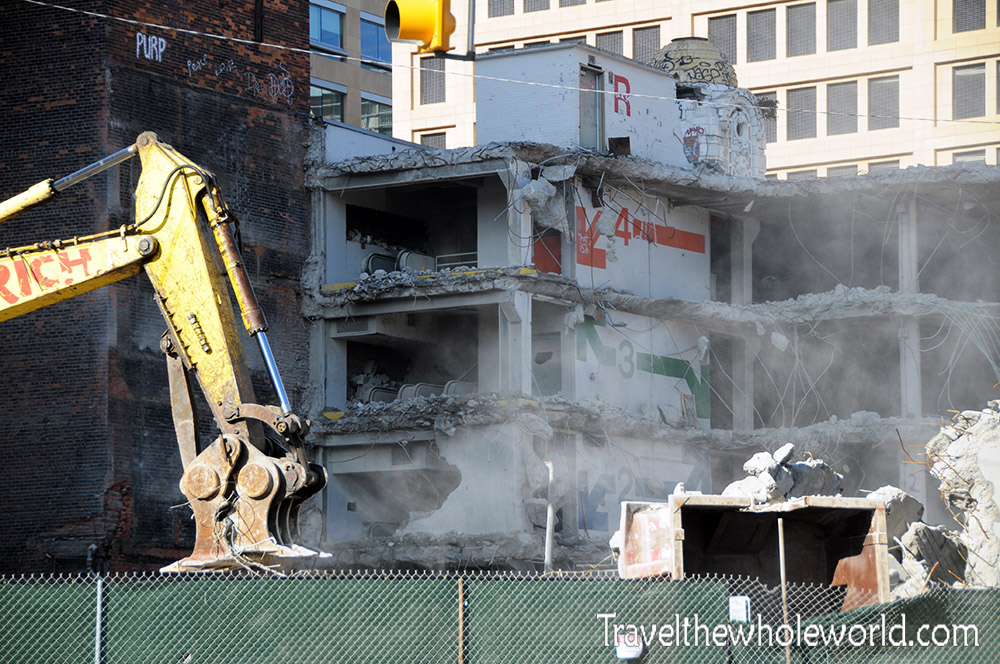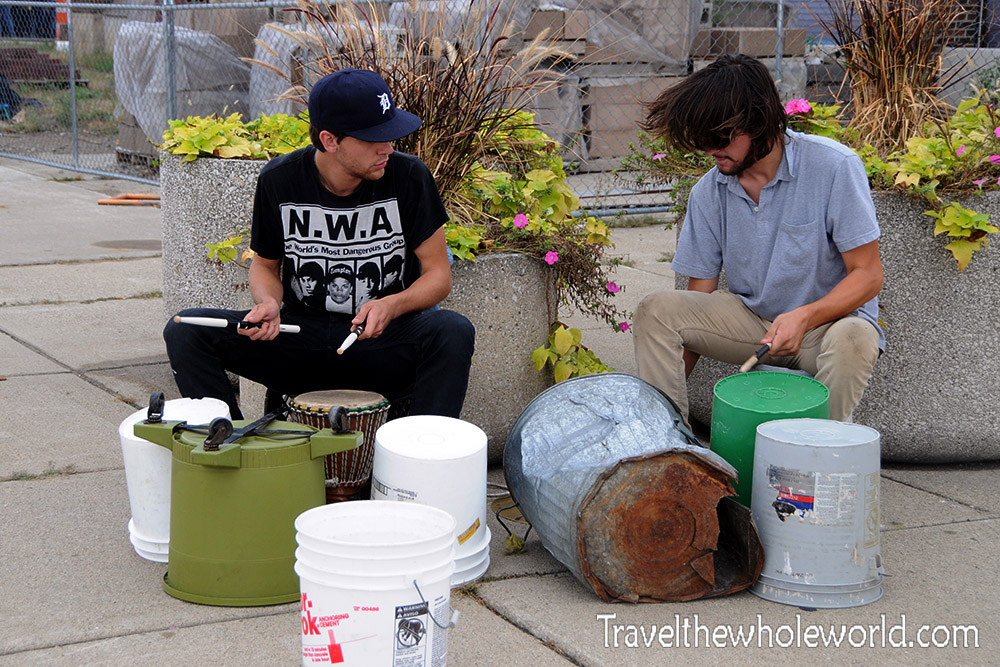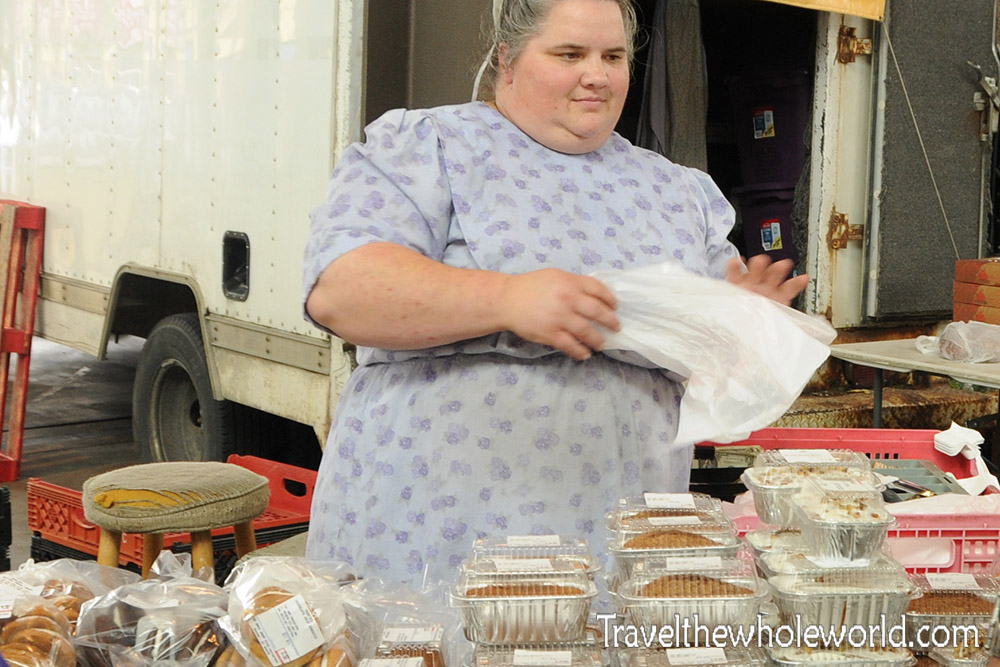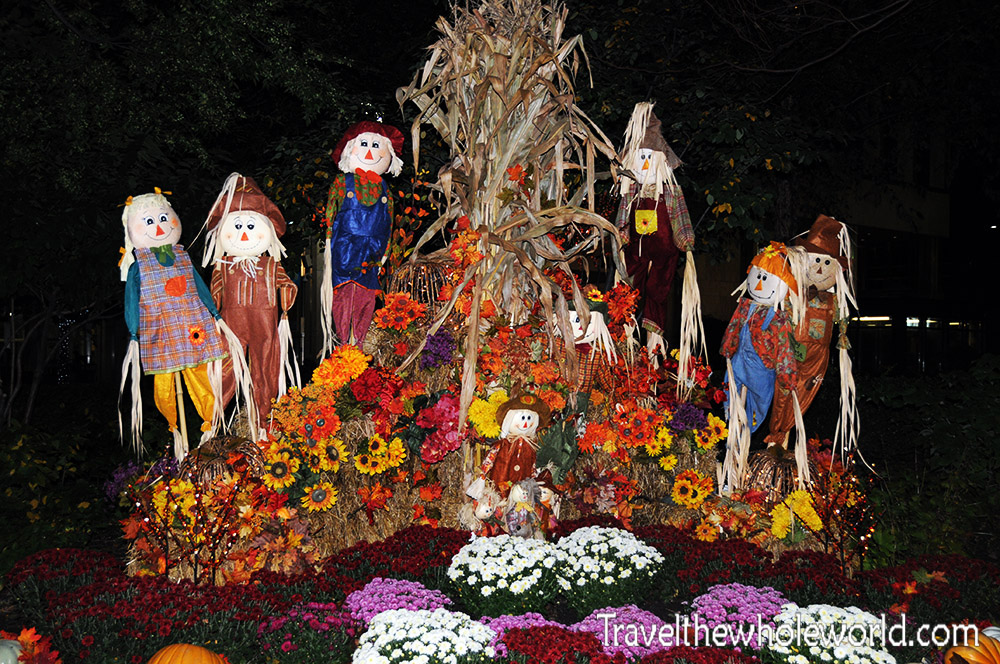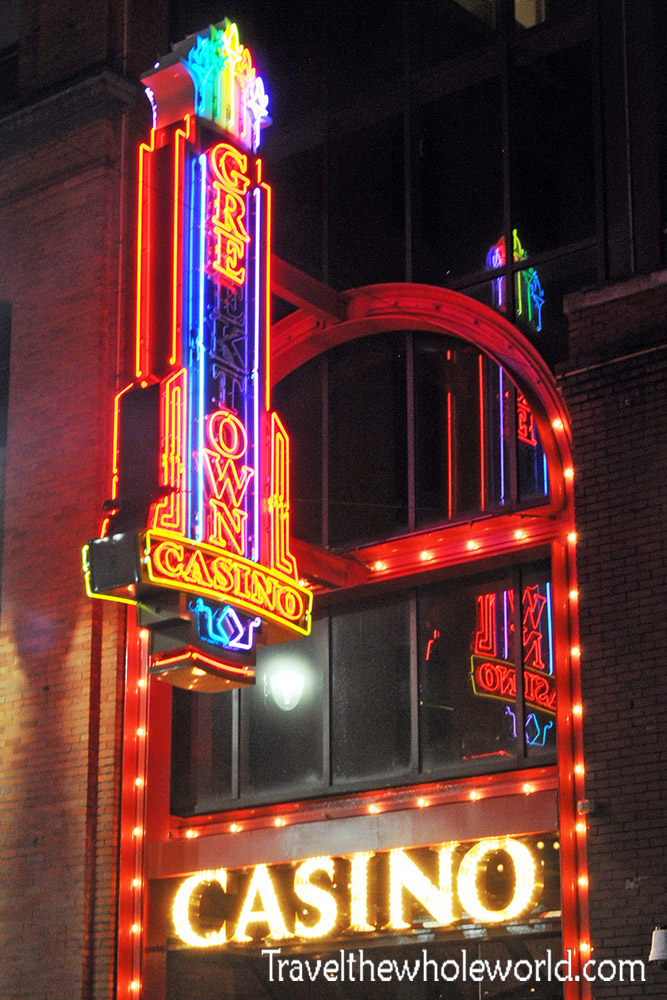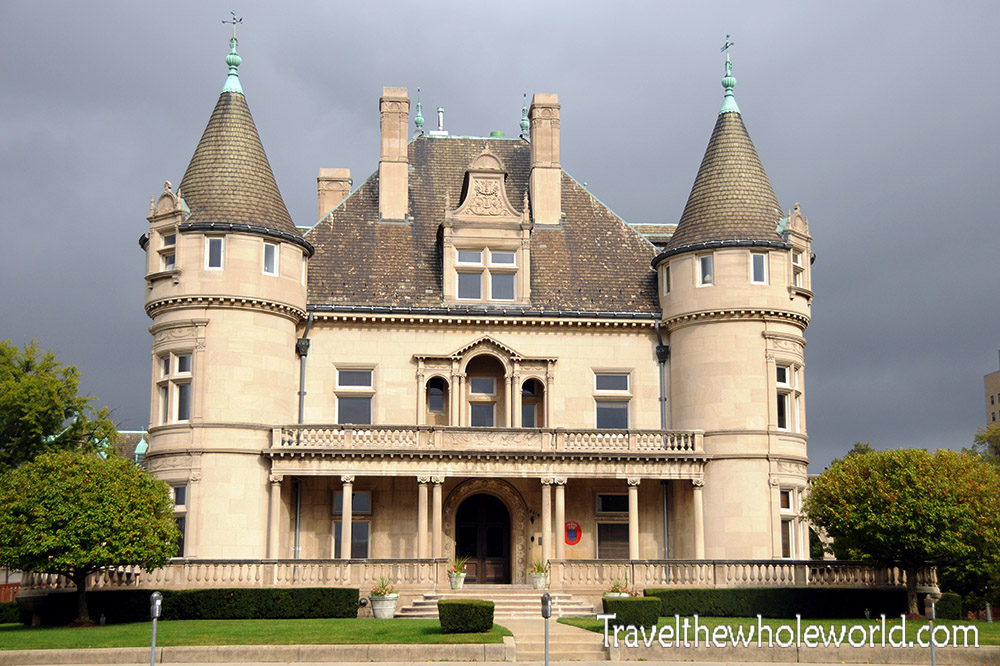Detroit
Under Renovation 🙂
Sad to say, but Detroit might have the worst reputation of any major city in America. Despite my open mind when I travel, I have to admit that my expectations of Detroit were quite low. Scary neighborhoods, abandoned buildings and high crime had taken over my imagination. While those areas certainly exist in Detroit, the city center or real Detroit was none of these. I was surprised to find that downtown Detroit was actually one of the most modern and cleanest cities I had been to! Right in the heart of the city is the Legacy Memorial, built in 2003 to recognize Michigan’s labor movement. Michigan once was one of America’s largest cities by population, and was the work horse in regards to steel, cars, and other manufacturing facilities. Once these industries collapsed due to globalization, a mass population exodus left the city with abandoned areas and rising crime.
Detroit’s city center is Hart Plaza, which overlooks the river that divides the United States from Canada. Hart Plaza is a great place to start exploring. Most of the city’s memorials are located here, and you also get some beautiful views of the city. The photograph above shows the Dodge and Son Memorial Fountain. Below is the Gateway to Freedom memorial; dedicated to slaves who escaped from the United States and made the difficult journey north to Canada.
This photo above shows a photo of downtown Detroit at night. You can tell by the picture it looks like a nice city and part of its reputation is definitely undeserved. It was most definitely not what I had been expecting in Detroit! I came here during the early fall, when it was the perfect time of year. It was still warm enough outside to walk around comfortably both during the day and night. I imagine during the winter time most people tend to hibernate here, since Detroit is one of America’s coldest cities.
Aside from how nice the downtown areas were, I was also surprised by how big Detroit was. I expected a few high rise buildings here and there, but Detroit is actually quite the concrete jungle. This city was actually once the 4th largest city in the United States! So much has changed over the past few decades that this is hard to imagine today.
So an obvious question about Detroit’s population exodus might be what happened? There are plenty of people who point to politics as the blame for Detroit’s downtrend, but in reality it was the result of globalization. Detroit was always nicknamed motor city, because it was the headquarters of not one but all three of America’s largest car manufacturers. This was the reason why Detroit grew to be such a major city, and once globalization came around it was simply not economically viable to mass produce cars in the United States. Most manufacturing started taking place overseas, and tens of thousands of jobs in Detroit were lost. Along with the loss of jobs came a loss in population. Neighborhoods were abandoned, crime increased, and other negative consequences. The photo above shows the headquarters of GM or General Motors, which had to declare bankruptcy during the Great Recession.
The downturn had been going on for decades, but the city was hit especially hard by the Great Recession in 2009. Chrysler which had been quartered in Detroit declared bankruptcy and merged with Fiat in Italy and moved their headquarters to London. At the time it was even debated if GM and Ford would survive. Since then things have definitely stabilized but the city has a long way to go to make a full recovery. This building was originally founded by General Motors in 1918, but they turned it over to the state government in 2000. When I visited Detroit I mistakenly associated everything with the name Cadillac from the car, but as it turns out the name comes from the French explorer who founded Detroit; Antoine de la Mothe Cadillac.
In the city center, a popular place to get brunch seemed to be the Hudson Cafe. I did exactly that one Sunday morning, and found the place was packed with a 45 minute wait just to get seated. There’s a ton of options here, and my apple covered French toast was a bit over the top but I wasn’t disappointed!
Another night for dinner I went from one extreme to the other. Instead of a something fancy I went to this infamous restaurant for their Coney Dogs. It looks more of a fast food joint, but its been popular for decades. To be honest, I didn’t find anything special about the food here, it was more about one of those tourist things you feel obligated to do. Directly next to this restaurant is another one with similar food. The two restaurants actually have some healthy competition with each other and next time I’ll give the other one a try!
Some ofOn an early morning excursion when I was trying to reach my hotel at 4am, I came across this flooded street on the upper right. It looks like that minivan is done for.
Now for the infamous parts of Detroit, the abandoned buildings! I know for sure that the building on the left were once a large apartment complex. On the right is what appears to be the remains of a large factory. It’s strange to see such enormous structures left completely abandoned to rot away. The two photos below show an abandoned strip of homes on the left while literally across the street were new homes seen in the lower right hand photo. I’m not sure if this new strip survived the recession or it’s a small part of the city’s recovery after all the dust settled.
One of the city’s most unique and interesting places to visit was the Heidelberg Project. I had heard about this right before my trip to the city and had wrongly assumed that this project of turning abandoned houses into giant forms of art was a recent project. The Heidelberg Project has actually been going on for decades! Most people seem to enjoy the concept and effort to try to do something positive with the neighborhood, though there are a few who see this in a negative light.
Some of the decorations are colorful and fun, while others can be a bit on the morbid side. I’m not sure why someone decided to crucify bunnies to this tree.
Lastly on the Heidelberg Project, it just so happened an arsonist torched one of the homes hours before my visit. Two volunteers were clearing up the debris and I was surprised by how attached they seemed to the project. They repeatedly told me it didn’t matter what had happened but mattered where they were going. On the right, the local news team interviews a woman about the neighborhood and fire.
My first stop to Detroit wasn’t downtown but actually their Eastern Market. This is a large farmers market that takes place on Saturdays. Above are some old buildings that were part of the farmers market. On the right is a colorful bus I saw here as well. There were people in it, but I’m not sure if it’s part of some public transportation to get to the farmers market or part of some weird Detroit tour someone might offer.
Above and below are some photos I took of Eastern Market. Their was lots of food for sale of course, but not so maybe prepared meals like I experienced in Portland’s or Washington D.C’s farmers market for example. Since it was October, there were lots of squashes and pumpkins for sale and the entire market was packed with people.
I ran into this guy on the left in the farmer’s market and he insisted that I take his picture. On the right is a man playing live music in front of a restaurant. There were lots of street artists here.
Along the Detroit river is a trail that takes you by some great views of the city, as well as monuments and even Windsor Canada. Above is a memorial dedicated to the slaves who escaped the south and made it north to freedom via the underground trail. On the right is a large cruise boat for tourism based out of Detroit.
These photos were taken in and around Eastern Market, but many parts of Detroit seemed to be covered in ‘street art’.
Another district in Detroit is Greektown known for its restaurants and casino. Originally this area was settled by Germans in the 1800s, but less than 100 years later they had moved on and Greeks had taken over. Less than another 100 years later, the area became more of a commercial and entertainment district. Above is a view of Greektown taken from a casino bridge over the district’s main street. On the right is one of my best friends, the honorable Hagy who I knew from my time in the Marines. I hadn’t seen him for two years since he is a local I had a chance to do a little catching up.
Something important I learned while visiting Detroit was the history behind the record label “Motown”. Even younger generations born decades later are familiar with many of these mid 20th century music artists like Marvin Gaye, Jackson 5, Diana Ross, Stevie Wonder and more. These artists wrote hundreds of successful songs that remain a major part of American culture today. All of Motown’s history began right here in this humble neighborhood. The tiny house on the upper right acted as the recording studio for years before moving to Los Angeles. Guided tours are available, but no photography is allowed once inside so you’ll have to visit this place for yourself. I can say it’s a very interesting tour and an amazing story about how this record label helped begin a cultural revolution that broke down racial barriers in the mid 20th century.
